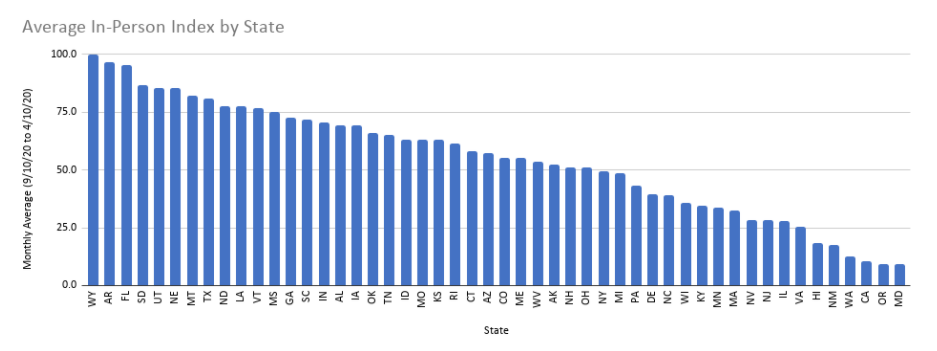Reason editor Matt Welch offers an interesting glimpse into school reopening by state.
The K-12 School Reopening Tracker indexes the monthly average number of in-person learning days. The most recent one is below.
Welch points out that the states on the left side of the graph, i.e., those with a higher number of in-person learning days, all voted for Donald Trump in 2020 and mostly have Republican representation in their state legislatures and Congressional delegations.
All ten states on the right side of the graph voted for Biden in 2020, have Democratic majorities in their statehouses, and mostly send Democrats to Washington, D.C.
Of course, North Carolina voted for Trump in 2020, has a Republican-led General Assembly, and sent two Republicans to the U.S. Senate. But, thanks to the Emergency Management Act, Democrat Governor Roy Cooper had an outsized role in dictating when and how schools could reopen.
Welch makes a simple observation that Republicans tended to open school buildings, while Democrats kept them closed. I am hesitant to adopt this formulation, given that correlation does not always equal causation. For example, Corey DeAngelis and Christos Makridis found an association between the influence of teacher unions and public school reopening strategies. While unions are typically aligned with Democrats, their relative power varies by state.
Regardless, I suspect that future empirical research will confirm that, when all else is taken into account, there was a significant association between political affiliation and school reopening decisions. Republican elected officials tended to champion reopening while their political opponents did not. The next question is why. Why did their ideological and political commitments favor one approach over the other?



